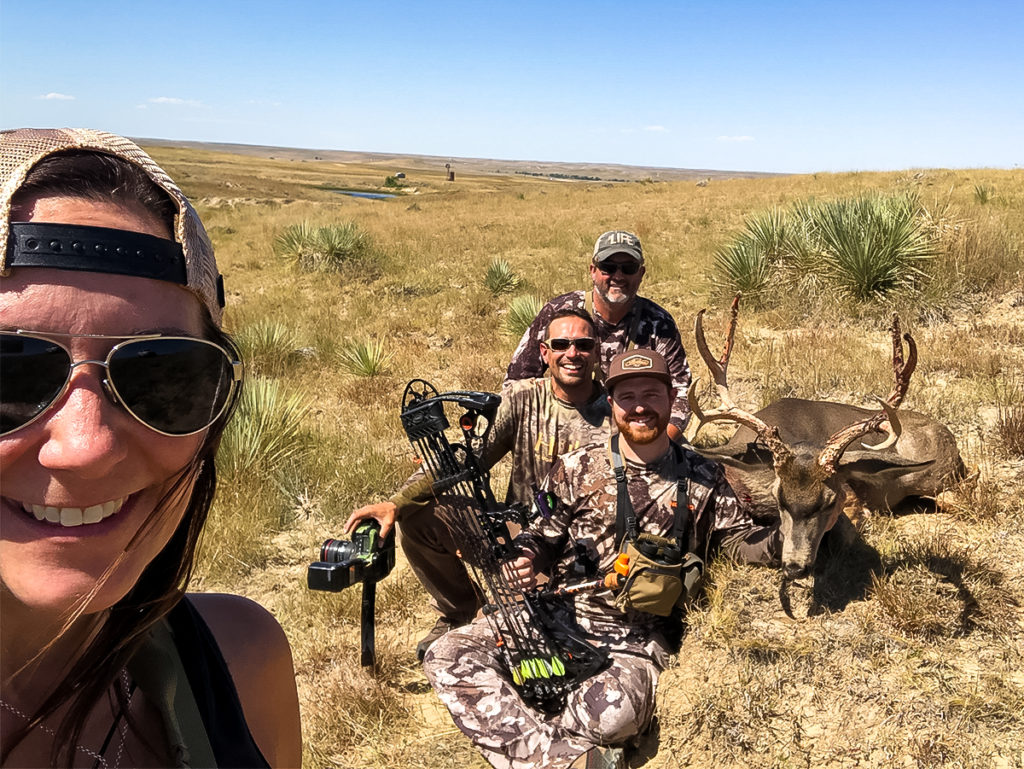By Zach Lazzari
Many of the Table Mountain archery antelope and mule deer hunts are based from strategic blind locations. The opportunity to sit tight while trophy bucks come within range is ideal for archery hunters. After taking the shot, following blood trails to recover the animal is an important skill and is not easily done in the western terrain.
Our hunting guides follow blood trails every year and they’ve seen a wide range of situations unfold. When following a blood trail with your guide, pay attention and don’t hesitate to ask questions. This will be a great opportunity to learn!
As you think about following blood trails this archery season, here are a few tips to keep in mind:
After the Shot
Immediately after taking the shot, sit tight and nock another arrow. Take the time for observation and pay close attention to the animal. Can you see the fletching from the arrow? How did the animal react? Is another shot opportunity present?
If the deer or antelope does not run on impact, it does not necessarily indicate a bad shot was made. Nock another arrow and take another shot if the opportunity is present. It can end things more quickly and make for a faster recovery. If the animal reacts and moves out of range, glass the animal for signs of blood. You may see where the shot landed and have an idea if it will result in a quick and clean kill.
Get in touch with your guide!
If and when the animal leaves your view, be patient. These can be painfully long moments to wait. But hang tight until your guide arrives.
Depending on the situation, we’ll wait anywhere from 30 minutes to an hour before we begin following the blood trail. Unless you can clearly see it drop from the blind, hold tight. The archery season usually means hot weather and we will do everything in our power to recover the animal as quickly as possible. The best thing you can do is to pay attention to the animal’s movements and take good mental notes on the situation.
Start Tracking
When we begin tracking, the blind will act as a point of reference for the shot. Walk to the area where you think the hit took place and move slowly, looking for blood, fur and the general disturbance of tracks. Be cautious not to cut tracks and blood with your own feet. If you’re able to recover the arrow, it will reveal clues about the shot placement. An entire arrow, covered in blood is ideal and means it passed through. A broken arrow likely wedged between the ribs or shoulders and snapped off but may have penetrated vital organs.
The color of blood can also offer clues as to where the arrow penetrated. Lighter, pink coloration means you hit the heart or lungs. If the spray is heavy, look in the immediate vicinity for the animal. The fast blood loss will lead to a quicker death. A lighter spray may indicate penetration through a single lung and the animal may have traveled a bit farther.
Darker colored blood could indicate a liver or gut shot and it will take some time for the animal to expire. Proceed with caution and focus more on glassing to locate the animal lying down. At this point, it’s important to avoid bumping the animal from its bed. If needed, your guide will help you carefully plan a stalk to make a follow-up shot.
Hitting muscle tissue will leave lighter colored blood and rather than spray, it will fall in droplets. This is a worst-case scenario and may indicate a wounded animal. We will take it very slowly, marking the blood locations. Your guide may also want to stop and glass to try and find the animal in a bedded position. At this point, we are looking for a stalk opportunity to take another shot.
Conclusion
While the excitement and adrenaline of a close-range bow opportunity can leave you breathless, it’s important to practice patience and thoughtfulness through the entire shot process and the following minutes. The observations you make immediately following the shot can help you and your guide tremendously when it comes time to recover the animal.
About Our Wyoming Bow Hunts
Here at Table Mountain Outfitters, we don’t just offer a few token bow hunts. We are passionate archery hunters. We offer incredible bow hunts for antelope, mule deer and elk. To learn more about these hunts or about our adventures, please take a few minutes to explore the rest of our website. If you’d like more details, please contact us anytime.
Zach Lazzari is an OUTDOOR WRITER, fly fishing guide and hunting enthusiast. Follow Zach at BUSTEDOARLOCK.COM.
